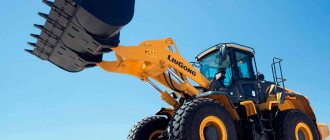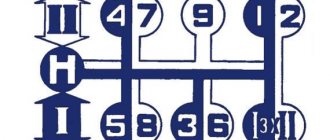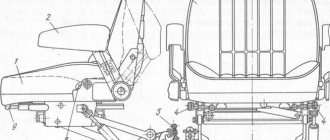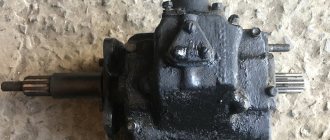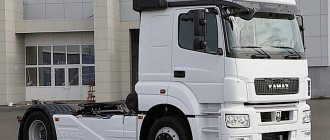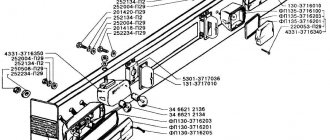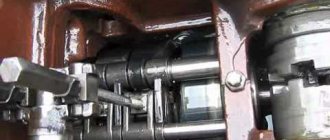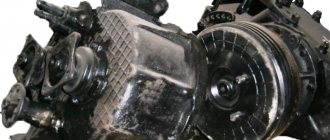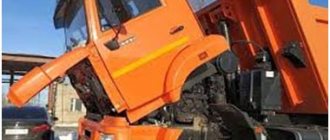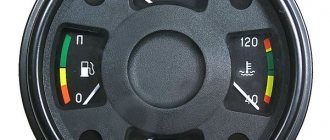It is impossible to manage without this technology in a warehouse. It is in demand in construction and other work where large loads have to be handled. We are talking about forklifts. To operate these machines, a short training period is sufficient. Knowing which forklift controls are the most important will help speed up your understanding of the process. This makes it easier to understand the basic operating principles.
Forklift control systems may be different. Currently, the most commonly used is joystick or lever. Each has its own advantages, so you should choose special equipment taking into account the preferences and characteristics of your work.
Note to managers of warehouses, construction and agricultural organizations
It is quite easy to maintain such loading machines. This does not require large investments or time. All spare parts for front loaders are available. To maintain equipment, you just need to find a reliable supplier, and this is real! One of the best companies working in this direction is Belagro. The organization operates in the format of an online store and delivers certified components from the manufacturer throughout Russia.
Studying the design
The front loader is controlled (forks, grips, buckets and other elements are installed as attachments) by means of such components as:
- Egnition lock. It has two positions: OFF, when you insert and remove from there, ON - in which you move it to turn on the motor.
- Horn switch. On standard models, this element is located in the center of the steering wheel.
- Forward to reverse switch. Installed on loaders with automatic transmission. It has three positions: forward and reverse, as well as neutral. Reverse levers and gear selector are installed on loaders with automatic transmission. With their help, not only the direction of travel is adjusted, but also the speed (high, low).
- Combination switch for turning on lights and turning.
- Parking brake lever. This element operates in the same way as on most cars. When parking, you need to pull it back all the way; it is released by pressing the button at the top.
- Pedal system: accelerator, brake, clutch (for models equipped with a manual gearbox), slow speed (for versions with automatic transmission).
- A handle that controls the raising and lowering of forks or other gripping equipment.
- Mast tilt adjustment lever.
- Steering wheel. For ease of control of the loader, a handle is installed on it.
- Steering wheel tilt adjuster with lock.
Knowing what purpose the loader controls have, it will be easier for you or your subordinates to learn. In general, the system is standard; on different models it may differ only in minor nuances.
Levers and pedals
The slides, located under the operator’s hands, control the movement of the machine. Management is carried out as follows:
- Rotate – one of the levers moves forward at a greater angle than the other;
- forward – both scenes are moved away from themselves at an equal angle;
- back - both scenes are pulled towards themselves, the angle is also equal;
- turn in place - one of the handles turns forward, the other turns back.
Left pedal in use (bottom left image):
- To raise the arrow, click on it from below (1);
- to lower it – to the top of the element (2).
The lifting device in a floating state is used to prepare loose soil (reverse). When there are no buttons on the rocker, to activate this mode, you must press the front of the accelerator until it locks (a certain sound will be heard).
To turn off this mode, raise the boom. When there is a “float” button (3) on the lever, it is pressed and held, the front part of the accelerator (2) is clamped together with it, and the lifting device is lowered. Then the above button (3) is released.
To raise/tilt the bucket, use the right accelerator (lower right image) :
- Raise – press its lower part;
- overturn - the top one.
Maximum Improvement
As you know, forklift controls and instrumentation are located in the cab. This is no different from special vehicles. The operator performs all actions with the load, sees and controls the condition of the machine. On modern models of loaders, the joystick control system is becoming increasingly popular. Its advantages over the lever one are obvious:
- ease of manipulation, which not only facilitates but also speeds up loading processes. And this directly affects productivity;
- creates less noise during work – this is achieved due to the absence of a hydraulic pump;
- cabinets are used to place levers, but they are not needed for joysticks, which allows you to create more comfortable conditions in the cabin: increased visibility, spaciousness. This also has a positive effect on all processes.
Controlling the mini loader using a joystick saves operator effort. To complete the process, it is enough for him to apply force with his hand; his arms and shoulders are not involved. When the joystick was first introduced into technology, it was located to the right of the operator according to the standard scheme. Mobile versions of control devices are currently being produced. For example, if the operator is left-handed, he can install the joystick on the left side that is convenient for him.
What does a forklift control mechanism consist of? Pedals, levers as an example
The forklift is controlled using levers and pedals, as well as steering column switches. Let's look at the example of a forklift with a manual transmission (MT) and an automatic transmission (AT).
Loader Control Levers
We will divide this chapter into three main sections, which will talk about the mechanisms responsible for moving and stopping the forklift, the control levers of the main working parts and the pedals of the forklift.
1. Levers responsible for moving and controlling the loader
GEAR SHIFT LEVER AND DIRECTION SHIFT LEVER (for loaders with manual transmission)
The loader has two shift levers built into the floor (forward/reverse direction and speed: 2 gears when moving forward and backward, respectively). When the driving direction shift lever is placed in the reverse position “R”, the reverse lights come on and an audible signal sounds.
Before changing speed or driving direction, fully depress the clutch pedal. Also, bring the forklift to a complete stop before switching the direction of travel back and forth or vice versa.
GEAR SHIFT LEVER (for loaders with automatic transmission)
The lift truck will begin to move slowly or crawl when the brake pedal is released and the shift lever is in any position other than neutral. Do not release the brake pedal until you are ready to move. |
The loader has one shift lever on the steering column (1 forward and 1 reverse gear).
When the gear shift lever is placed in the reverse position “R”, the reverse lights come on and the horn sounds.
Stop the forklift completely before switching direction of travel back and forth.
| NOTE The direction shift lever (manual transmission) and the gear shift lever, also known as the steering column drive switch (automatic transmission), have a neutral position. Before starting the engine, place the levers in neutral. Automatic and manual transmission forklifts will not start if the direction shift levers are not in the neutral position. |
TILT STEERING LEVER
| CAREFULLY! Before starting your workday or shift, adjust the steering column tilt lever accordingly. After adjustment, move the lever to position “A” to lock the steering column. Do not attempt to make adjustments during operation. |
Adjust the steering column angle to suit the driver.
Turn the lever to position “B” and adjust the steering column angle correctly, then move the lever to position “A” and lock the steering column.
PARKING BRAKE LEVER
| CAUTION! When parking on a slope, block your wheels. |
Pull the lever back to lock the two front wheels. The lever is locked in this position. To release the parking brake, press and hold the release button at the top of the lever and move the lever forward.
2. Control levers for the boom and working bodies.
CARRIAGE LIFT LEVER
| WARNING Sit in the driver's seat and make sure that no one is near the forklift before operating the lift lever. |
Pull the lever back to raise the forks and push the lever forward to lower them. The fork lifting speed can be controlled by lever angle and accelerator pedal pressure or engine speed. Note that the fork lowering speed can only be controlled by the lever angle. The engine speed does not affect the fork lowering speed.
TILT LEVER
| CAREFULLY Sit in the driver's seat and make sure there are no people around the forklift before operating the lift lever. |
Pull the tilt lever back to tilt the mast back and push it forward to tilt the mast forward.
The tilt speed of the mast can also be adjusted using the angle of inclination of this lever and pressing the gas pedal.
| NOTE When the engine is not running, the mast cannot be tilted forward even if the tilt lever is pressed because the tilt locking mechanism installed in the control valve is activated. Note that the forks will lower when the lift lever is pressed, even if the engine is not running. |
3. Forklift pedals
The main differences in the purpose of the pedals on a forklift are in the use of the clutch pedal; for loaders with a manual transmission this pedal is used for its intended purpose, and in loaders with an automatic transmission it is used for moving at a very slow speed.
The loader has three foot controls: clutch (or inching pedal)
CLUTCH PEDAL FOR MANUAL TRANSMISSION
Engages and disengages the transmission from the engine. The clutch is released by pressing this pedal and is engaged again when the pedal is released
| NOTE Do not drive a forklift with the clutch not fully disengaged. |
SLOW PEDAL FOR AUTOMATIC TRANSMISSION
| CAREFULLY Do not use the inching pedal to reduce travel speed when driving up or down a hill; in this case, the clutch disengages, making engine braking impossible. |
Use this pedal to move the forklift slowly while the loader is operating at high speed.
If the pedal is pressed lightly, the hydraulic clutch pressure drops (clutch incomplete).
If the pedal is pressed fully, the clutch is fully disengaged and the brake is applied.
For more details, refer to your forklift owner's manual.
BRAKE PEDAL
Press the brake pedal to slow the forklift. When this pedal is pressed, the brake lights come on.
ACCELERATOR PEDAL
Press the gas pedal to speed up the forklift. When the acceleration pedal is released, the engine idles.
| Gasoline forklifts |
To start the engine in cold weather, use an automatic or manual choke.
Interesting information
Of course, in order to master operating a forklift using a joystick, you need to undergo training. Once you understand the nuances of the process, there will be no problems or difficulties. For example, in order to lift using a joystick, you just need to move its handle forward; to lower it, you pull it towards you. To perform loading, for example, scooping up bulk materials with an excavator bucket, the joystick is directed to the right. To free yourself from the load, go left. Even the fact that the price of components for such a loader control system is more expensive than a lever control system is compensated by high performance.
As for the levers, their main advantage is that they are made using technology that has been tested over the years. They rarely break and are easily repaired. The components are cheap. However, more and more forklift owners prefer joysticks. And the advantages listed in the previous block play an important role in this.
Separate joystick
ISO type.
It involves the use of the left console, which must be moved from one position to another in a measured manner, without unnecessary haste.
Here is the functionality of this trigger:
- To move equipment (forward/reverse), move the remote control in the desired direction;
- turn left/right (forward) – the switch moves simultaneously forward and in the desired direction;
- for reversing and turning at the same time - the trigger moves backwards and in the desired direction;
- To make a turn on the spot, the switch moves to the left or right.
The bucket and lifting mechanism are adjusted using the right console:
- To lift, move the switch backwards;
- to lower - forward;
- unload – tilt away from you;
- tilt back - towards yourself.
